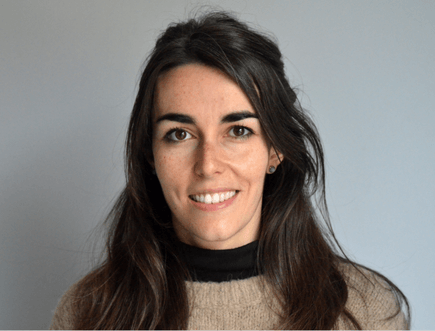Miriam Martínez - 17 January 2023
Genetic inheritance and gene mutations
How does genetic information pass down through generations and what errors can occur?

The basis of genetic inheritance
In people, genes can influence characteristics such as height or the color of your eyes. DNA is inherited from our parents. As diploid organisms, we have a combination of two sets of genes, one from each parent. Both copies of each gene (called alleles) are brought together to produce a new set of instructions and reshuffled in new generations.
The set of alleles carried by an individual determines his/her genotype: if two identical alleles are carried (two copies of the gene having the same sequence), the individual is homozygous; if two different alleles are carried (two copies of the gene harboring one or more nucleotide changes) he/she is heterozygous.
 Difference between homozygous and heterozygous.
Difference between homozygous and heterozygous.
The genotype of an individual, together with environmental influences, determines the appearance of distinct phenotypes: traits including morphological characteristics, physiological or biochemical properties, behavioral patterns…
An allele can be dominant or recessive. In the first case, only one copy of the allele is sufficient to express the phenotype associated with the allele, so it shows its effect in heterozygous individuals. In the second, it only appears in homozygous individuals.
Most allele variants do not have pathological implications but only contribute to increasing the genetic variability of a population (e.g. different persons have different eye colors because of the presence of different alleles encoding for different pigments). Some gene variants can cause genetic diseases.
Eyes color is an example of a morphological trait with genetic inheritance. Brown (B) is dominant while blue is recessive (b). Individuals carrying one or two B alleles will have brown eyes, and individuals with two b alleles will have blue eyes.
Genetic mutations
Mutations are permanent changes in the DNA sequence of an organism. They can be introduced by errors in the process of DNA replication or by exposition to mutagenic agents (chemicals, UV or X-ray, viral infection…).
There are different types of mutations:
- nucleotide substitutions
- nucleotide deletions
- nucleotide insertions
- complex chromosomal rearrangements (translocations, deletions, duplications, inversions).
Mutations affecting the coding sequence of a gene could affect protein translation, giving rise to the synthesis of mutated or truncated proteins or causing the complete absence of the protein.
Nucleotide substitutions
The substitution of one nucleotide (point mutation) could affect protein translation in different ways:
- Silent mutations produce synonym codons, encoding the same amino acid of the wild-type sequence. So no effect at the protein level.
- Nonsense mutations cause the introduction of a STOP codon, giving rise to a truncated protein that is not functional.
- Missense mutations cause the insertion of a different amino acid. Depending on the biochemical properties of the new amino acid missense mutations can be conservative (if similar) or non-conservative (if different).
 Types of point mutations.
Types of point mutations.
Nucleotide insertions and deletions
Insertion and deletion of nucleotides could cause:
- Frameshift: changes in the reading frame resulting in changes in the amino acid sequence.
- Insertion or deletion of amino acids
The first case occurs if insertions/deletions are not multiple of 3; in the second case, they are multiple of 3.
 Frameshift mutation. Source: microbenotes.com
Frameshift mutation. Source: microbenotes.com
 By Miriam Martínez
By Miriam Martínez
Miriam is a Human Biologist expert in neuropharmacology. After a master’s degree in Pharmaceutical and Biotech Industry, she obtained her PhD in Biomedicine from Pompeu Fabra University (Barcelona). During her doctorate, she focused her research on the behavioral analysis of animal models for neurophenotypical characterization. Since then, she has been working in the healthcare marketing and publicity sector, where she has contributed to developing marketing campaigns for several pharmaceutical brands. In 2021, she joined ZeClinics with a branding and marketing strategy focus.